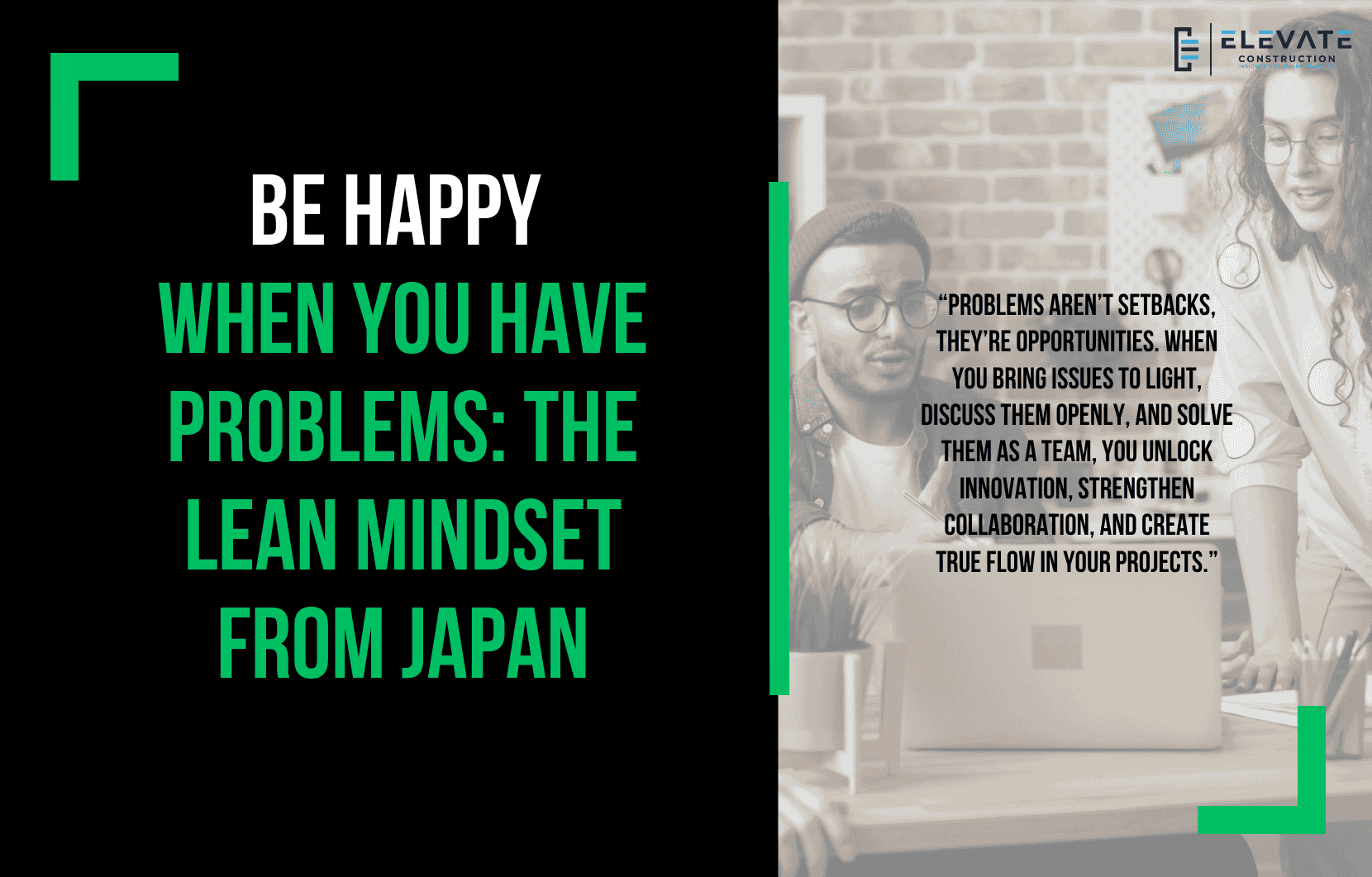Be Happy When You Have Problems: The Lean Mindset from Japan
In this blog, I want to share one of the most powerful lessons I learned in Japan, the idea that problems are not a problem. This concept completely changed the way I look at challenges, not just in construction, but in life. It’s all about rewiring your brain to see problems as opportunities for learning, collaboration, and innovation.
Before diving in, let’s talk about the way we think. Our brains can be “prompted” just like AI to respond in certain ways. When we see mistakes or setbacks, our natural instinct is to blame or complain. But what if we could train our minds to see every problem as an invitation to improve? That’s the essence of the lean mindset I witnessed in Japan.
Be Grateful When You Have Problems
During my trip, Paul Akers and several Japanese leaders kept saying something that initially confused me: “Be grateful when you have problems.” Why would anyone be grateful for problems? Because when problems surface, they give you the chance to solve them, faster, smarter, and together. A culture that brings issues to light creates total participation and continuous improvement.
After World War II, Japan rebuilt itself from devastation through this very mindset. Rather than hiding from challenges, the Japanese embraced them head-on. They set ambitious goals, rebuilding their nation, creating the bullet train, winning the Deming Prize and worked together to achieve them. That collective effort, driven by gratitude for their challenges, became the foundation of their innovation and success.
The Western Contrast
In the West, we often hide our problems. We say things like “Everything’s fine,” or avoid talking about roadblocks for fear of being blamed. This mindset stifles growth. Lean thinking teaches the opposite: bring problems to the surface. Identify them, discuss them, solve them. When teams do this, they unlock flow, efficiency, and trust.
The Lean Principle
The lean principle is simple: Problems are not a problem. What’s truly problematic is thinking you don’t have any.
In lean construction, this means creating systems that make problems visible. The Last Planner System, for example, isn’t just about tracking performance, it’s about finding and removing roadblocks before they impact production. Flow doesn’t come from pushing harder; it comes from making work ready.
Learning from Japan
In Japanese factories, production lines are stopped thousands of times a day not because of major issues, but for tiny variations. Workers follow the “Stop, Call, Wait” approach:
- Stop the process when something seems off.
- Call the team to assess the issue.
- Wait to resume until the problem is fully resolved.
This level of vigilance keeps systems healthy and teams united. In construction, if we applied the same principle, stopping when a roadblock appears, bringing the team together, and solving it before continuing, we’d achieve extraordinary flow and stability on our projects.
Final Thoughts
All of lean construction comes down to two things:
- Identifying and removing roadblocks.
- Optimizing bottlenecks and constraints.
These are separate but equally essential. When we recognize that problems are not the enemy but rather the path to progress, we start building not just projects, but people.
So, here’s my challenge to you:
What can you do on your project site to start identifying, discussing, and solving problems as a team, so everyone can see, know, and act together?
Be grateful for your problems. They’re the foundation of growth, collaboration, and continuous improvement.
Key Takeaway
Problems aren’t setbacks, they’re opportunities. When you bring issues to light, discuss them openly, and solve them as a team, you unlock innovation, strengthen collaboration, and create true flow in your projects.
If you want to learn more we have:
-Takt Virtual Training: (Click here)
-Check out our Youtube channel for more info: (Click here)
-Listen to the Elevate Construction podcast: (Click here)
-Check out our training programs and certifications: (Click here)
-The Takt Book: (Click here)
Discover Jason’s Expertise:
Meet Jason Schroeder, the driving force behind Elevate Construction IST. As the company’s owner and principal consultant, he’s dedicated to taking construction to new heights. With a wealth of industry experience, he’s crafted the Field Engineer Boot Camp and Superintendent Boot Camp – intensive training programs engineered to cultivate top-tier leaders capable of steering their teams towards success. Jason’s vision? To expand his training initiatives across the nation, empowering construction firms to soar to unprecedented levels of excellence.
On we go

